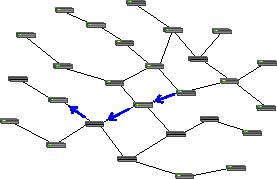Packet Forwarding is the process of a networking component accepting a packet and transmitting it to its destination.
What is Packet Forwarding?
Packet forwarding, also known as packet routing or internetworking, is the process of transmitting a data packet from one network to another network. In computer networking, packets are small pieces of data that are transmitted over a network. Packet forwarding involves receiving a packet at one network node, examining the destination address contained in the packet header, and then forwarding the packet to the next node in the network that is closer to the destination.
Packet forwarding is a fundamental function of networking devices such as routers, switches, and firewalls. These devices are responsible for forwarding packets between networks and routing packets to their destination. They use routing tables and protocols to determine the best path for a packet to take through the network.
Packet forwarding is an important part of how the Internet works, as it enables packets to be transmitted between networks and devices that are physically separated by large distances. It allows devices to communicate with each other and enables the exchange of information over the Internet.
For example, a router receives packets from hosts on one attached network and forwards them to hosts on another attached network or to another router for further forwarding.

How a packet is forwarded is based on a comparison of the packet’s destination address with the routing table stored in the router. Each act of forwarding performed by a router is called a hop across the internetwork.
Packet Forwarding Techniques
There are several packet-forwarding techniques we can use depending on the destination host:
Next-Hop Method
By only maintaining the details of the next hop or next router in the packet’s path, the next-hop approach reduces the size of the routing table. The routing table maintained using this method does not have the information regarding the whole route that the packet must take.
Network-Specific Method
In this method, the entries are not made for all of the destination hosts in the router’s network. Rather, the entry is made of the destination networks that are connected to the router.
Host-Specific Method
In this method, the routing table has the entries for all of the destination hosts in the destination network. With the increase in the size of the routing table, the efficiency of the routing table decreases. It finds its application in the process of verification of route and security purposes.
Default Method
Let’s assume- A host in network N1 is connected to two routers, one of which (router R1) is connected to network N2 and the other router R2 to the rest of the internet. As a result, the routing table only has one default entry for the router R2.